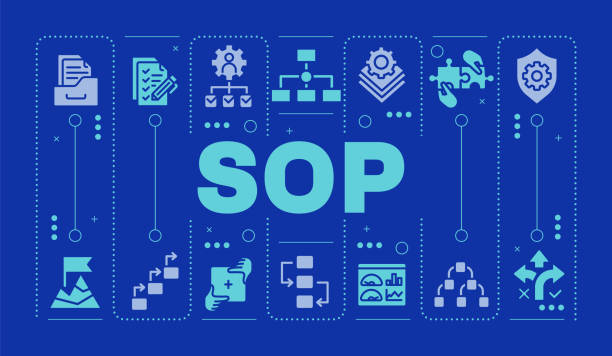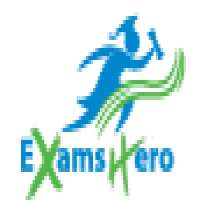Procurement and Vendor Management SOP Development for Government Contracts

Strong 8k brings an ultra-HD IPTV experience to your living room and your pocket.
Enhancing Compliance, Efficiency, and Accountability Through the Development of SOPs
In the realm of government contracting, transparency, accountability, and regulatory compliance are not just best practices—they are mandates. With millions or even billions of riyals allocated annually to public projects, the risk of inefficiencies, fraud, or mismanagement increases significantly without a structured system in place.
That is why the development of SOPs (Standard Operating Procedures) for procurement and vendor management is critical. These SOPs act as the procedural backbone of public procurement, helping ministries, government agencies, and contractors ensure that every transaction and relationship adheres to legal, ethical, and performance standards.
This article explores how structured SOPs are developed for procurement and vendor oversight, and why they are essential for executing reliable, transparent, and efficient government contracts.
The Importance of SOPs in Government Procurement
Governments operate under intense scrutiny. From public auditors and anti-corruption agencies to civil society and international bodies, procurement practices must be beyond reproach. SOPs serve as written instructions that define how procurement and vendor management processes are to be conducted—removing ambiguity and mitigating risks.
Key benefits of SOPs in this space include:
Ensuring legal and regulatory compliance
Standardizing vendor evaluation and selection
Preventing corruption and unethical practices
Improving procurement cycle times and efficiency
Providing audit trails and performance metrics
In short, the development of SOPs helps create a defensible, transparent, and effective procurement ecosystem for public sector operations.
Understanding Government Procurement and Vendor Management
Procurement for government contracts involves the acquisition of goods, services, or works from external suppliers. This includes everything from infrastructure projects to IT services, security systems, and office supplies.
Vendor management, on the other hand, refers to overseeing relationships with those suppliers—from onboarding and evaluation to performance monitoring and payment.
Without SOPs to govern these areas, inconsistencies and liabilities can arise:
Incomplete documentation
Conflicts of interest
Delayed deliveries and project failures
Overpayments or duplicate billing
Non-compliance with government procurement regulations
This is where a formal SOP development process becomes essential.
The SOP Development Process for Procurement and Vendor Management
Developing effective SOPs requires a structured and collaborative approach. Below is a breakdown of the development of SOPs for government procurement and vendor management systems:
1. Process Identification and Mapping
The first step is to identify and map all procurement-related workflows, including:
Requisition submission and approval
Tendering or request-for-proposal (RFP) procedures
Bid evaluation and vendor selection
Contract award and signing
Vendor onboarding and registration
Invoice processing and payment
Mapping these out helps identify redundancies, risks, and areas lacking control.
2. Stakeholder Engagement
Consulting key departments is crucial:
Procurement and legal teams
Finance and audit offices
IT and technical evaluators
External contractors and vendors (where appropriate)
Their input ensures the SOPs reflect actual needs and regulatory constraints.
3. Drafting SOPs
SOPs must be detailed, clear, and actionable. Each SOP typically includes:
Objective and scope
Roles and responsibilities
Required documentation
Step-by-step actions
Approval authority levels
Timeframes and compliance references
For example, a Vendor Selection SOP might define:
Prequalification criteria
Evaluation scoring matrix
Rules for conflict-of-interest disclosures
Appeal or dispute resolution mechanisms
4. Legal and Regulatory Review
Government contracts must comply with local procurement laws (such as Saudi Arabia’s Government Tenders and Procurement Law), international standards (e.g., WTO GPA), and internal control mandates.
SOPs are reviewed by legal counsel and regulatory auditors to ensure alignment.
5. Pilot Testing and Training
Before rollout, SOPs are piloted in real-world scenarios to test their clarity, effectiveness, and ease of use. Simultaneously, training sessions are held for:
Procurement officers
Project managers
Vendor representatives
Training ensures smooth adoption and adherence.
6. Implementation and Monitoring
Once finalized, SOPs are formally issued through digital platforms or printed manuals. Monitoring mechanisms are also implemented, such as:
Compliance checklists
Internal audit schedules
Feedback loops for updates
This makes SOPs living documents rather than static policies.
Critical SOP Areas in Government Procurement
The development of SOPs for procurement and vendor management typically covers these core areas:
1. Vendor Prequalification and Registration
Eligibility criteria (legal, financial, technical)
Background checks and certifications
Onboarding documentation
2. Tendering and Bidding SOPs
Methods of procurement (open tender, limited tender, direct purchase)
Advertising requirements and bid timelines
Bid security and ethical declarations
3. Bid Evaluation and Award SOPs
Technical and financial evaluation procedures
Conflict of interest prevention
Approval workflows for awarding contracts
4. Contract Management SOPs
Milestone tracking
Change order protocols
Legal obligations and penalty clauses
5. Vendor Performance Monitoring
KPIs and service level agreements (SLAs)
Inspection and verification steps
Escalation procedures for non-performance
6. Payment Processing SOPs
Invoice verification
Payment approvals and timelines
Tax and compliance checks
Digital Transformation and SOP Integration
Modern governments are moving toward e-procurement platforms that integrate SOPs directly into workflows. These digital tools:
Automate bid submission and evaluation
Provide real-time alerts for compliance lapses
Maintain audit trails for every transaction
Include embedded SOPs via tooltips, dropdowns, or forms
Examples include platforms like Etimad in Saudi Arabia, which centralize public procurement in a transparent and trackable digital environment.
The development of SOPs must now account for digital integration, ensuring that SOPs are designed to work seamlessly within software systems and procurement platforms.
Risk Mitigation Through SOPs
When properly implemented, SOPs reduce risk in critical areas:
Fraud prevention: Mandatory checks and balances minimize manipulation
Audit readiness: Documentation trails make audits easier
Vendor accountability: Clear SLAs and penalty clauses enforce compliance
Budget control: Standardized approvals prevent cost overruns
SOPs act as both a proactive and reactive tool for managing procurement-related risks in government projects.
Real-World Impact: SOP Success in Saudi Arabia
Several Saudi ministries have reported improvements in procurement efficiency and contract management after adopting formal SOPs:
A Ministry of Health procurement reform reduced average tender time by 30%
SOPs in the Ministry of Transport improved vendor performance scorecards
The Vision 2030 oversight team mandated SOPs for all public-private partnership (PPP) contracts, reducing compliance violations significantly
These examples highlight how the development of SOPs directly contributes to project success, cost efficiency, and public trust.
Conclusion
In the world of government contracts, precision is everything. Whether it’s buying infrastructure materials, hiring consultants, or managing IT services, every procurement decision must be transparent, efficient, and defensible.
That’s why the development of SOPs for procurement and vendor management is not a luxury—it’s a necessity. With a systematic SOP framework, governments can build institutional integrity, prevent mismanagement, and deliver better services to the public.
In today’s complex governance landscape, strong SOPs are the foundation of strong outcomes. And when it comes to managing public funds, there is no room for error.
Read More
Entertainment and Media SOP Creation for Saudi Cultural Transformation
Agricultural SOP Development for Saudi Food Security Initiative Projects
Islamic Banking SOP Framework: Sharia Compliance and SAMA Requirements
Note: IndiBlogHub features both user-submitted and editorial content. We do not verify third-party contributions. Read our Disclaimer and Privacy Policyfor details.







